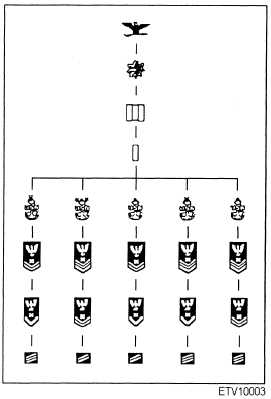potentially hazardous conditions to you supervisor. Be
ready to offer some suggestions about how to correct the
unsafe condition. Your ideas may help to speed the
correction.
3. Correct the problem at the source. Don’t stop
with just correcting the unsafe condition. Find its source
and begin your corrective actions there. If you have the
authority to correct the problem at the source, then do
so. If the problem involves people, then point out the
unsafe condition and correct the workers causing it.
Hold on-the-spot training if needed. If you don’t, you’re
inviting repetition of the unsafe practice.
4. Take temporary precautions. You may need to
delay correcting an unsafe condition because of a
shortage of funds, personnel, or equipment. If this
happens, take whatever temporary precautions you
need to protect both yourself and your coworkers from
the unsafe condition until it can be corrected. These
precautions may include
securing the hazardous areas,
disconnecting power sources,
posting warning signs, and
giving verbal warning to workers.
Whatever precautions are necessary, take them
promptly to reduce the exposure of any hazardous
condition to all personnel.
Here is an important final word about your
responsibility to correct unsafe conditions. Sometimes
an unsafe condition may arise that needs
IMMEDIATE corrective action. This is especially true
in situations that pose an immediate hazard to life or
health. Don’t delay because you may not have the
authority to correct such an unsafe condition. In
emergencies, YOU HAVE IT! Just be sure you don’t
put yourself or others in danger of being hurt. And, if
you can’t SAFELY correct the problem, inform your
supervisor about it immediately.
SAFETY RESPONSIBILITIES
From the commanding officer on down the chain of
command to each individual, safety is everyone’s
business. Even though the safety program is ultimately
the responsibility of the commanding officer, everyone
must take part in the program for it to be successful. The
following paragraphs briefly describe the specific
responsibilities of the key individuals in a command’s
safety program.
COMMANDING OFFICER
Commanding officers are directly responsible for
the safety of all personnel under their command. They
cannot delegate this responsibility. However, they can
give all officers and petty officers under their command
enough authority to make sure everyone understands
and follows all prescribed safety precautions.
COMMAND SAFETY OFFICER
The command safety officer is responsible to the
commanding officer for coordinating a complete safety
program based on the objectives established by the
commanding officer. Specifically, he or she performs
the following safety related functions:
Acts as principal advisor to the commanding
officer on all internal safety matters
Coordinates the commandwide safety program
Promotes maximum cooperation for safety
matters at all levels
Ensures widest dissemination of all safety
information
1-9


